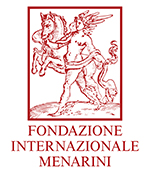
Press Release
New cell therapy techniques
will help beat leukaemia
Genoa, 12 February 2015 – Major international and Italian leukaemia experts will meet in Genoa from 12 to 14 February on occasion of the “Stem Cells, Cancer, Immunology and Aging” symposium organised by the Giannina Gaslini Institute and sponsored by the Fondazione Internazionale Menarini. This symposium will be focussing on new cell therapy techniques that are proving to be very promising even in the more severe cases of acute lymphoblastic leukaemia. “The myth of the chimera, a mythological animal, part lion, part goat and part serpent, is reborn to defeat the most widespread cancer in childhood, leukaemia”, explains Francesco Frassoni, Director of the Stem Cell and Cell Therapy Centre of the Giannina Gaslini Scientific Institute of Genoa. “This Chimera, in part antibody and in part T-cell receptor, springs from a cellular modification called CAR (Chimeric antigen receptor, that is, the antigen-specific Chimeric receptor). The method entails the extraction, with a blood withdrawal, of several of the patient’s T-lymphocytes, the blood cells that play a key role in the action of our immune system. In the laboratory, a receptor is “added” to the T-lymphocytes, which is capable of recognising the majority of the leukemic cells, and after having recognised the sick protein a powerful mechanism found inside the T-lymphocyte stimulates it to expand and proliferate when it adheres to this protein. At this stage, the T-lymphocytes are re-injected into the patient where they are able to seek, find and destroy the cancer cells”. Initially this technique required manual selection of the T-cells that are specific for the cancer before being able to multiply them in the laboratory and stimulate them with the cancer antigen. But this process required significant resources and was too time consuming. Luckily, for several years now the cell culture technology allows for reproducing in a short time a large population of T-cells similar to the mass of cells found in the human immune system. This has given rise to the possibility of implementing therapies via use of the T-cells in specialised laboratories and academic medical centres throughout the world. A study conducted by the Children's Hospital of Philadelphia and the University of Pennsylvania was presented at the annual congress of the American Society of Haematology held in San Francisco in December 2014. “We illustrated the data relating to the use of the CAR T-cells in 39 children with acute remitting lymphoblastic leukaemia that was refractory to other therapies”, explained David Barrett, of the Children's Hospital of Philadelphia, one of the authors of the study who was intervening at the symposium in Genoa.
“After six months of treatment, 70 percent of the children were clear of the disease,witha total of 92 percent of complete responders to the therapy. It was only necessary to resort to further treatment for five children and three of these underwent a stem cell transplant”. This is a surprising result in view of the fact that these were patients with a decidedly negative prognosis. In the future, treatment with the CAR T-cells could be the salvation for those patients who fail to improve after previous treatments and for whom the final solution would be a bone marrow transplant. In addition, we must not overlook the favourable profile surrounding the fewer long-term side effects of the treatment with CAR T-cells, compared to chemotherapy and radiotherapy that are the standard treatments for many cases of relapsing leukaemia. This research therefore fosters hope for an increasingly more prolonged survival for children suffering from leukaemia, and cancer in general, however it raises doubts about the long-term consequences of current therapies. Every year in Italy, approximately 1,400 cases of cancer are diagnosed in children (0-15 years) and 800 cases in adolescents (15-19 years). Over the years, we have observed a progressive increase in survival: the chances of healing, which was between 50% and 60% in the nineties, currently stands at 80%. Today, one out of 800 20-year olds is cured from cancer diagnosed and treated during his/her childhood, and it is estimated that 25,000 people, 1.2‰ of young Italians under the age of 33, have been diagnosed with cancer in childhood. “Another significant result: it has been calculated that by 2020, one out of every 600 people aged between thirty and fifty in the United States will have been cured of a childhood cancer. The increment in the possibility of healing also increases the likelihood of the healed subjects observing toxic effects later on in life: both radiotherapy and chemotherapy can give rise to endocrine and germinal damage to testicles and ovaries, causing sterility, with significant implications for the individual’s quality of life. It is therefore essential to worry about what will happen afterwards”, warns Frassoni.
Download PDF